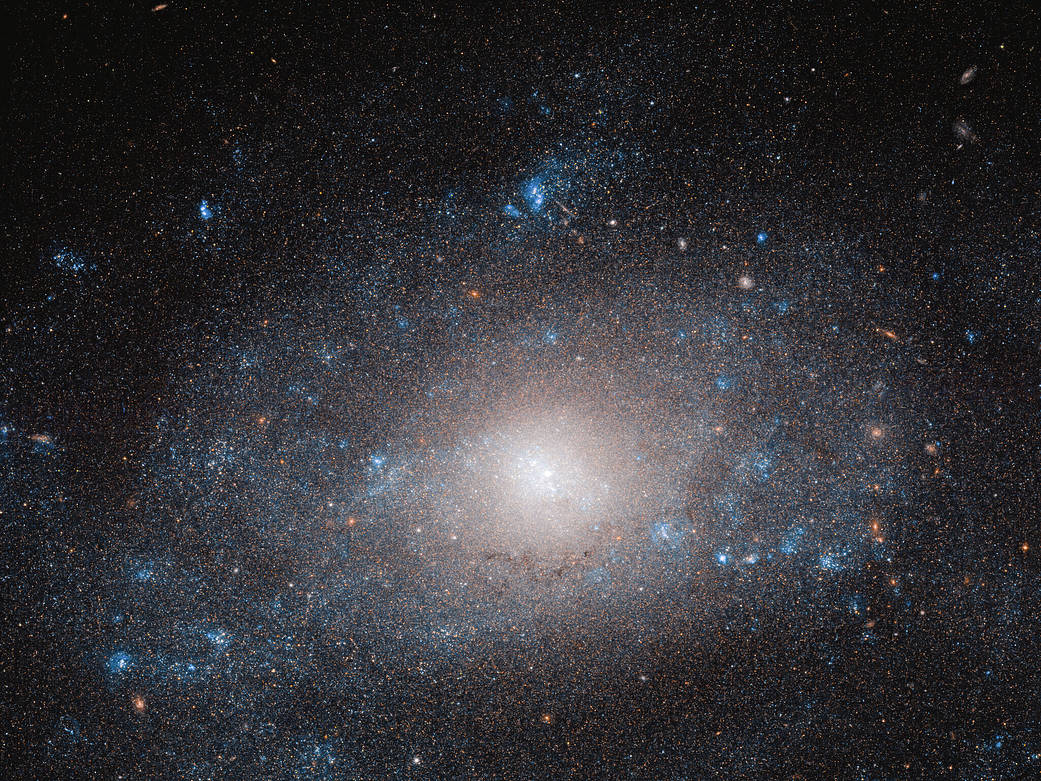哈勃望远镜看到了一个位于“黑暗面”的星系
Resting on the tail of the Great Bear in the constellation of Ursa Major lies NGC 5585, a spiral galaxy that is more than it appears.
The many stars and clouds of dust and gas that make up NGC 5585, shown here in this Hubble image, contribute only a small fraction of the total mass of the galaxy. As in many galaxies, this discrepancy can be explained by the abundant yet seemingly invisible presence of dark matter, a mysterious material that astronomers can’t directly observe.
The stellar disk of the galaxy extends over 35,000 light-years across. When compared with galaxies of a similar shape and size, NGC 5585 stands out by having a notably different composition. Contributing to the total mass of the galaxy, it contains a far higher proportion of dark matter.
Hot spots of star formation can be seen along the galaxy’s faint spiral arms. These regions shine a brilliant blue, contrasting strikingly against the ever-black background of space.
Text credit: ESA (European Space Agency)
Image credit: ESA/Hubble & NASA, R. Tully; acknowledgment: Gagandeep Anand
NGC 5585坐落在大熊星座大熊的尾巴上,这是一个螺旋状的星系,比它看起来的要复杂得多。
在这张哈勃望远镜拍摄的图片中,许多恒星、尘埃和气体云组成了NGC 5585,它们只占整个星系质量的一小部分。就像在许多星系中一样,这种差异可以用暗物质的大量存在来解释,暗物质是一种天文学家无法直接观察到的神秘物质。
该星系的恒星盘跨度超过35,000光年。与形状和大小相似的星系相比,NGC 5585的组成明显不同。在星系的总质量中,暗物质所占的比例要高得多。
在银河系微弱的旋臂上可以看到恒星形成的热点。这些区域散发出灿烂的蓝色,与永远漆黑的太空背景形成鲜明对比。
文本来源:欧洲航天局(ESA)
影像来源:ESA/Hubble & NASA, R. Tully; 致谢:Gagandeep Anand

